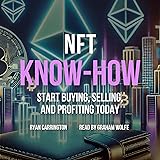The current Bitcoin bull market is far from over, with numerous indicators suggesting significant upside potential, despite the recent all-time highs. As the accompanying video thoroughly explains, a comprehensive look at both established and unconventional metrics reveals a market that, while certainly growing, has not yet entered the parabolic, “unsound” phase characterized by widespread retail euphoria and unsustainable price surges. Understanding where we stand in this cycle requires a nuanced approach, moving beyond simplistic backtested models to assess the underlying market psychology and real-world adoption trends.
For investors navigating the volatile waters of cryptocurrency, discerning genuine market signals from mere noise is paramount. While many analytical tools exist to project potential market tops, the speaker in the video rightly cautions against relying solely on models that are often perfected through backtesting, offering a seemingly flawless historical fit but no guarantee of future accuracy. Instead, a more robust strategy combines insights from these technical indicators with an understanding of human behavior and verifiable on-chain and public interest data. This multi-faceted perspective helps identify whether the current upward momentum is a sustainable growth phase or an impending bubble.
The Double-Edged Sword of Bitcoin Cycle Indicators
It is true that a plethora of sophisticated models have been developed to chart Bitcoin’s journey through its cyclical booms and busts. The video highlights several of these, including the P-Cycle Top Indicator, the Puel Multiple, the MVRV Z-Score, and the iconic Bitcoin Rainbow Chart. Collectively, an impressive 30 such indicators are currently signaling a healthy “Hodl” market, suggesting that the current rally is not yet overheated. However, this broad consensus among indicators, while seemingly reassuring, can also be misleading if their inherent limitations are not fully understood.
Many of these indicators, despite their complex calculations, essentially measure momentum and profitability against historical averages. For example, the P-Cycle Top Indicator tracks momentum by comparing a doubled 350-day Daily Moving Average with a 111-day Daily Moving Average, looking for crossover points that historically marked cycle tops. Similarly, the Puel Multiple assesses miner profitability, with high profits potentially indicating increased selling pressure. While these tools have shown predictive power in past cycles, their reliance on historical data means they are inherently backward-looking. Constructing a model that perfectly explains past events is relatively straightforward; predicting future, unprecedented market dynamics is a far greater challenge.
A prime example of this cautionary note is the Puel Multiple, which, while effective in 2017, would have caused investors to miss the market top in 2021 if relied upon exclusively. The MVRV Z-Score, which compares Bitcoin’s market value to its realized value (the price at which coins last moved), is particularly interesting due to its use of on-chain data. It effectively gauges how much unrealized profit investors are sitting on, historically signaling a market top when this profit becomes excessively high. While currently in a “healthy” zone, it’s crucial to remember that on-chain data, though organic, doesn’t always distinguish between genuine sales and internal transfers, which could impact a model’s interpretation.
The Unchanging Force of Human Psychology
While technical indicators offer valuable insights, the most reliable constant in financial markets remains human psychology. The speaker emphatically states that people will always be driven by greed and fear, a fundamental truth that market cycles consistently demonstrate. This “This Time It Will Be Different” meme, often heard during bull markets, invariably proves to be a fallacy; the underlying psychological dynamics of investors rarely change. As Bitcoin prices climb, FOMO (Fear of Missing Out) draws in new retail investors, creating a self-reinforcing upward spiral, only for panic to set in during a subsequent correction.
The narrative that Bitcoin is now solely an institutional asset, driven by entities like BlackRock and MicroStrategy, overlooks the significant role retail investors continue to play. While institutional adoption through Bitcoin Spot ETFs has indeed changed the market landscape, the influence of individual investors is far from diminished. We saw this phenomenon with stocks like Nvidia and Tesla, where retail interest helped propel already high market capitalizations to unprecedented levels. This dynamic suggests that a significant influx of retail capital could still dramatically elevate Bitcoin’s price, potentially pushing it beyond even the 150,000 USD mark suggested by the video, and into the 250,000 USD range if sustained.
Beyond the Charts: Real-World Market Sentiment Indicators
To gain a more current and actionable understanding of market sentiment, the video pivots to real-world indicators that capture the pulse of general public interest. These metrics offer a distinct advantage over backtested models by reflecting present-day engagement and Fomo levels. By combining these with a seasoned understanding of market cycles, investors can build a robust framework for assessing the current state of the Bitcoin bull market.
Google Trends: A Glimpse into Public Curiosity
The search interest for “Bitcoin” on Google Trends serves as a potent barometer for retail engagement. After all, the first step for many new investors is to simply search for information online. The video highlights a significant uptick in Bitcoin search interest, climbing from 19% to 32% relative to the 2021 peak, particularly following new all-time highs exceeding 123,000 USD. This increase indicates a rekindling of public curiosity, yet it remains considerably lower than the frenzied peaks of previous cycles. This suggests that while interest is growing, the widespread, speculative “mania” phase has not fully materialized, leaving ample room for further growth before reaching a potential market top.
Reddit Activity: The Crypto Community’s Pulse
The engagement on subreddits like r/Bitcoin provides a window into the crypto community’s collective sentiment. The subreddit has seen massive growth, from around 200,000 subscribers when the speaker started investing to approximately 6 million today, demonstrating its increasing relevance. Analyzing metrics like “comments per day” reveals periods of heightened activity corresponding with price surges. During the 2021-2022 rally, comment volume spiked significantly, reflecting intense retail interest. Currently, however, while there’s a slight increase due to new highs, the overall engagement levels are still far below the 2021 peak. This indicates that while existing holders are active, a massive wave of new, emotionally driven retail investors has yet to fully enter the fray, reinforcing the idea that the bull run’s peak is still distant.
New Bitcoin Addresses: Tracking Network Expansion
The creation of new Bitcoin addresses is a fundamental on-chain metric that directly correlates with user adoption and network growth. Historically, periods of parabolic price increases have been accompanied by a surge in new addresses, as more individuals enter the ecosystem. Both the 2017 and 2021 bull runs clearly showed this correlation, with new addresses skyrocketing as prices reached their peaks. Currently, the growth in new Bitcoin addresses is notably subdued, indicating a lack of widespread influx of new users, particularly retail participants. While the rise of Bitcoin Spot ETFs might channel some new capital through traditional financial instruments, many retail investors would still opt for self-custody solutions, making this metric a reliable indicator of broad-based retail interest and participation.
Crypto App Store Rankings: Mainstream Adoption Signal
The ranking of cryptocurrency exchange applications, such as Coinbase, in major app stores (e.g., Apple App Store) offers a compelling real-world signal of mainstream public interest. During the bull market tops of 2017 and 2021, the Coinbase app consistently ranked among the Top 3 in the Finance category, and often high in the overall App category, indicating widespread consumer downloads and engagement. Currently, while the Coinbase app has seen a recent rise, it only sits at approximately #10 in the Finance category. This stark difference highlights that the general public has not yet reached the fever pitch of downloading crypto apps, suggesting that we are still far from the mainstream retail mania that often characterizes a market top.
Crafting a Personal Strategy for the Cycle Top
Armed with these insights, the speaker outlines a personal profit-taking strategy that prioritizes market intuition and real-world sentiment over strict reliance on backtested models. This approach acknowledges the inherent unpredictability of the market while aiming to capitalize on human psychological patterns. The goal is not to perfectly time the absolute top, which is notoriously difficult, but rather to identify “top regions” where market euphoria becomes excessive and unsustainable.
The speaker’s strategy is clear: sell when the market feels “unhealthy” and exhibits clear signs of retail FOMO, even if it’s only a small percentage of holdings. This money would then be sidelined, awaiting the inevitable bear market for re-entry. It’s a pragmatic approach that recognizes there are more important things in life than maximizing every single satoshi, such as achieving personal financial goals like homeownership or renovating. While Bitcoin offers immense potential, a balanced perspective ensures that wealth accumulation serves broader life objectives.
The conviction remains strong: this Bitcoin bull market is in its early stages of a true “bull run” phase, far from its cycle top. The collective evidence from technical indicators and, crucially, real-world sentiment points to continued growth. However, when the market does eventually enter a phase where retail and institutional FOMO reaches extreme levels, potentially pushing Bitcoin prices rapidly from 150,000 USD to 250,000 USD or higher, it will signal a time for strategic profit-taking. This nuanced understanding of the Bitcoin cycle, combining data with an awareness of human nature, empowers investors to make informed decisions for long-term success.







